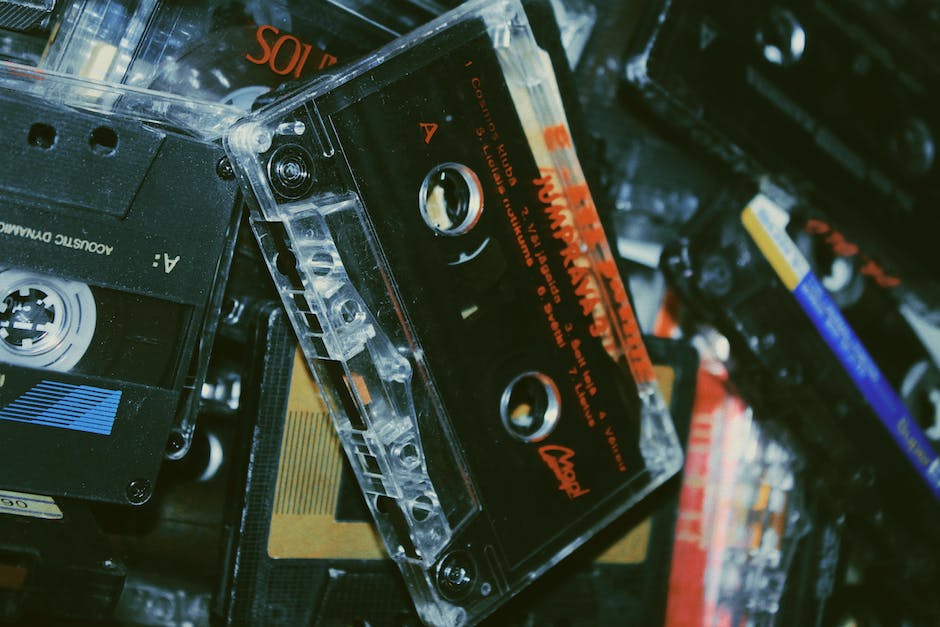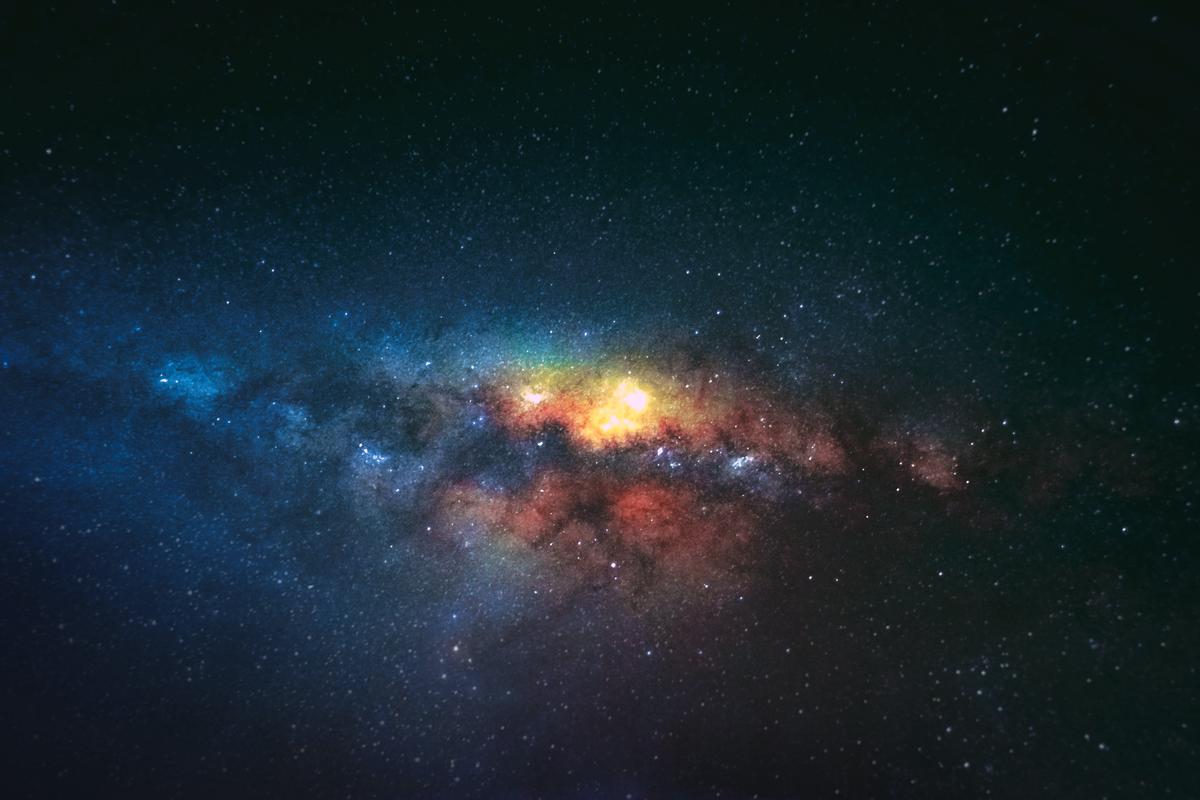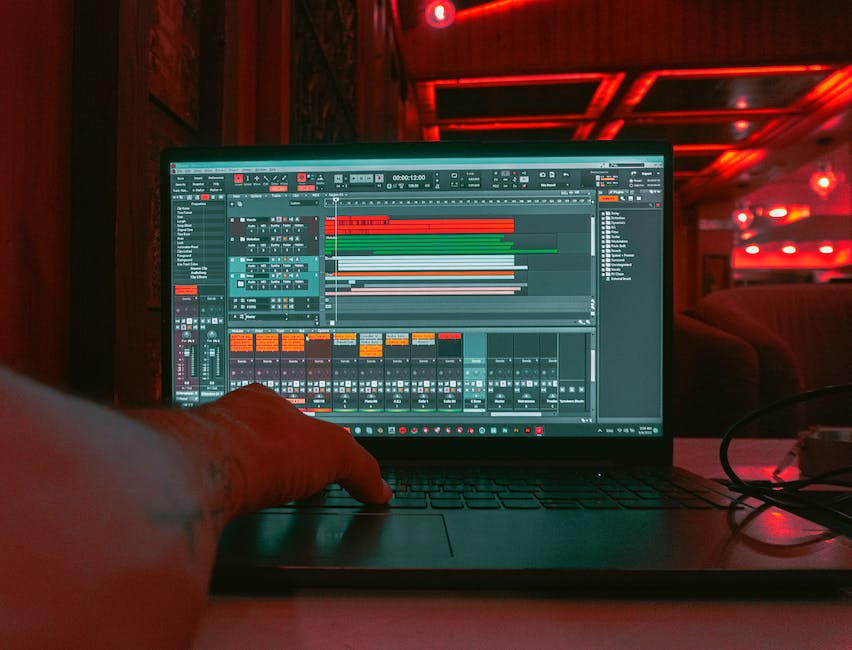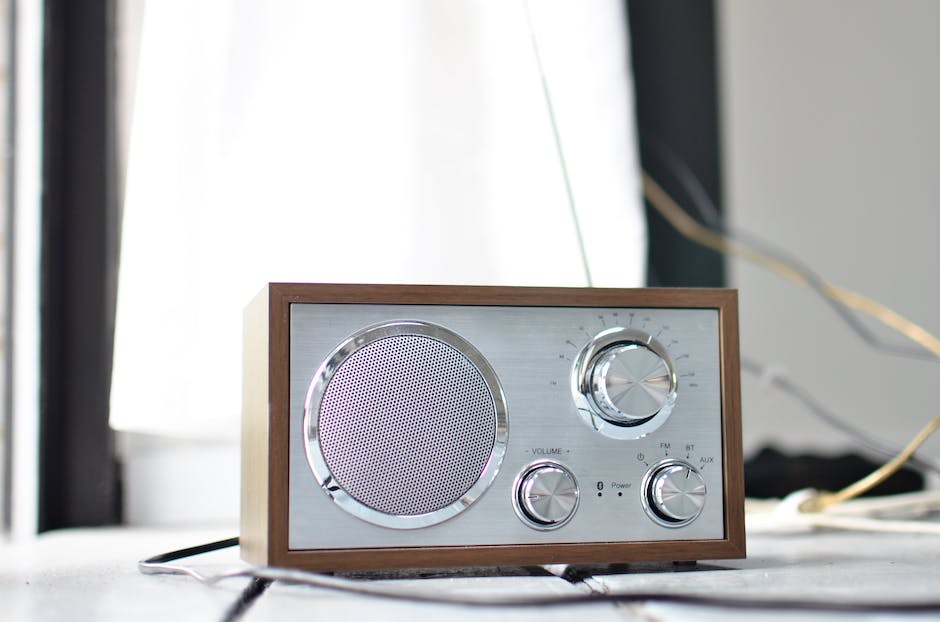In an era where advances in technology continue to dominate and transform how we interact with the world around us, one field that has seen significant evolution is the music industry. Central to this shift is the advent of Digital Audio Workstations (DAWs), software that has revolutionized the approach towards creation, editing, and delivery of music. Seamlessly weaving technology with artistry, DAWs have replaced traditional recording studios, transforming the landscape of music creation and performance. This discussion delves into the heart of DAWs, exploring their origins, prominence, and their significant role in the modern music industry.
Understanding Digital Audio Workstations (DAWs)
Digital Audio Workstations (DAWs): Musical Revolution in a Digital Age
Undeniably, music – that shimmering, pulsating kaleidoscope of human emotion captured in harmonies and rhythms – touches us deeply. The magic lies not only within the lyrics or melody, but also the process of creating these sonic masterpieces. Transforming this incredible journey, one innovation has undeniably revolutionized the music industry: Digital Audio Workstations, euphoniously known as DAWs.
DAWs are the modern day music studios embraced fervently by every aspiring bedroom producer to seasoned industry veterans, their influence stretching from the ice-capped peaks of electronica to the lush, vibrant meadows of folk. These software applications designed for recording, editing, and producing audio files, are the invisible hand, the ethereal conductor orchestrating each note and beat in the symphony that is modern music.
Yet, how exactly have DAWs revolutionized the industry?
Think back to the heady days of traditional recording studios, peppered with snaking cables, towering speakers, and imposing mixers. To record music, an array of microphones, amplifiers, and instruments was required. Today, DAWs have compressed this sprawling landscape into the compact confines of a laptop. The freedom is intoxicating. Aspiring artists across the globe, armed only with a DAW and a dream, have turned humble bedrooms into vibrant studios, birthing riveting Ragnaroks of rhythm that capture the very essence of human spirit.
From electronica’s pulsating echo to the ascendant crescendo of rock, DAWs dance across genre lines with elegant ease. Offering an array of synthesized instruments, samples, and effects, they become limitless musical paintboxes, spurring a sonic renaissance exploding with colorful creativity. Seamless looping, exquisite editing, and crystalline recording – these are the tools that DAWs have gifted music makers, empowering every rhythm and melody to radiate with a purity only paralleled by a Mozart concerto.
The days of requiring lavish recording studios, bristling with intimidating consoles and staffed with an army of audio engineers, are fading like the vinyl age. Not only have DAWs democratized the process of music creation, but they have also condensed geographic expanses, connecting collaborators from all corners of the Earth. From the icy realms of Reykjavik to the sun-baked avenues of Los Angeles, a shared online session transports artists to a shared creative space, collaboratively painting a masterpiece in real-time.
While DAWs have rampantly transformed the process of creating music, they have profoundly amplified the music industry’s accessibility, bringing its hallowed corridors within reach of every eager enthusiast. Their influence on music education, too, is unparalleled. No longer does learning the ins and outs of music production require an intimidating plunge into the deep, daunting world of hardware. A brave new era of bedroom producers, armed with accessible DAWs, have gleefully seized the reins of the music industry, rewriting its melodic narrative with fervor.
Digital Audio Workstations, they are more than just software. They are the lifeblood pumping through the veins of the contemporary music industry, delivering a digital revolution that empowers sonic landscapes to evolve, captivates our hearts, and unites the globe in a shared anthem of inspiration. The symphony of our future, it seems, indeed pulses to the beat of DAWs.

Popular DAWs in the Market
The symphony of melodies and rhythms that echo through the world of music today, resonates with the bold signature of Digital Audio Workstations (DAWs). Born of technology, these platforms bridge reality and virtuality, scripting a new chapter in the realm of sound. Sailing on the currents of innovation and creativity, several DAWs have emerged as leaders in this space.
Perhaps the brightest star in this constellation is Ableton Live. A favorite among electronic music producers and DJs, its distinctive Session View facilitates on-the-fly track arrangement. Its seamless integration of MIDI sequencing, sampling, and digital audio makes it an ideal platform for composing, recording, mixing, and mastering. Not to mention, its myriad instrument and effects plugins allow for exploration and innovation in sound design.
Next up, Logic Pro X. This stalwart DAW, exclusive to Mac users, holds a renowned reputation in the music community. Designed with a prodigious library of plugins and sounds, Logic Pro X assists creators in producing beautifully polished and professional-sounding tracks. It’s favored by many for its user-friendly interface that synergises with the creative work-flow, delivering an unparalleled composing, recording, and editing experience.
Pro Tools, the industry standard in professional recording studios, offers high-end audio production and engineering advantages. The system’s immersive audio capabilities, advanced automation, and expansive plugin arrangement allow for the creation of complex compositions with high precision. Notable is its ability to handle large multitrack sessions, allowing collaborators to connect effectively across different locations.
FL Studio, extraordinarily popular among beat makers and electronic music producers, showcases a pattern-based music sequencer. Distinguished by its sleek interface and impressive playlist window, layout handling in FL Studio becomes child’s play. Its extensive collection of instruments and plugin integrations embrace imperfections, painting a canvas filled with unique, distinctive sounds.
On its journey through the cosmos of music production, the exploration cannot ignore Reason. A fully equipped DAW, Reason stands out with its unique rack-based audio routing that mimics a traditional studio setup, offering a familiar environment for traditional music producers transitioning into the digital realms. A kaleidoscope of eclectic synth options, samplers, drum machines, and effects add another layer of allure for sound design enthusiasts.
Steering away from conventional waters, a rising star, Reaper, enters the frame. Its ability to customize the entire experience makes it stand out among its peers. Reaper allows you to adapt its appearance, shortcuts, signal routing, and even processing scripts to fit with your unique workflow. Its streamlined, economic, and flexible approach to music production heralds a fresh perspective in the world of DAWs.
These are just a snapshot in the vast universe of DAWs available today, each holding its unique attributes, signature workflow, and dedicated user base. The best DAW? That’s something that’s distinctly personal, defined by the creator’s approach, genre, and workflow preferences. What’s undeniable, however, is the transformative power they hold in shaping the soundtracks of our existence. Whichever your DAW companion may be, it is bound to be a thrilling voyage into the uncharted territories of auditory expression.

Photo by shotbycerqueira on Unsplash
Learning to Navigate DAWs
As the sun begins its descent, casting a warm, inviting glow over the monitors, an aspiring musician summons the intuitive power of their Digital Audio Workstation (DAW). The world waits with bated breath as each tap of the keyboard, each slide of the mouse, weaves together a symphony of sounds into a captivating masterpiece. The journey of diving into a DAW might evoke images of navigating through a labyrinth at first. Yet, with some guidance and persistence, harnessing these digital marvels can become a second nature for any budding musician.
Filtering through the plethora of DAWs could resemble scavenging for vinyl records in a music shop – myriad options, each resonating a different vibe. The key to mastering your chosen DAW lies in dedicating time to explore its individual features. The sleek curves of Ableton Live, the comforting familiarity of Logic Pro X, the robust personality of Pro Tools, the dynamic versatility of FL Studio, the robust uniqueness of Reason, or the raw power of Reaper – they may seem overwhelming initially but promise to be companions in your musical journey.
A DAW is an artist’s canvas, offering unlimited strokes of creativity. It provides the grandeur of symphony and the intimacy of a lullaby – all at the disposal of your fingertips. Delving into the distinct attributes and features of each DAW, tailored to your creative preferences, is of paramount importance. Taking the time to dissect these features across every DAW, understanding their differences, identities, and characteristics, will offer a plethora of tools for your musical arsenal.
The key to unlocking the true potential of a DAW leans heavily into the realization of its transformative power in creating music. Composing, producing, and collaborating – everything is possible here. However, the connection between a musician and their DAW transcends mere functional utilization; it is a deeply personal exploration of creative nuances. Choose a DAW that resonates with your artistic instincts and offers a natural flow to your creative process. Each DAW has its rhythm, much like a heartbeat; find one that matches your artistic tempo.
Finally, immerse yourself utterly in your chosen DAW. The digital world yields to those who dare to engage with it deeply. Familiarize yourself with its channels, play with its plug-ins, master its shortcuts, tweak its EQ, and mix your magic into it. Let the DAW become an extension of you – an electronic ancestry that traces your musical evolution.
Building synergy with a DAW is a gradual process that requires patience and persistence. However, once that relationship is firmly established, it becomes a powerful ally. Every command, every control, every click will then become a note in your symphony, a hue in your masterpiece, and a rhythm in your narrative. Only then will you truly experience the magic of music and the power of your chosen DAW. Navigating through your DAW is no longer a challenge but a dance, and such a dance can turn any chord into a melody, any sound into a song, any dream into a symphony.

DAWs in live music and performances
As we delve deep into the immersive world of music, it becomes increasingly apparent just how instrumental Digital Audio Workstations (DAWs) are to the live music sphere. While their role in music production is insurmountable, their usage in live performances is often less brought to the front. Their presence pulsates backstage, shaping the depth, dynamics, colors, and textures that breathe life into concerts and cradle the audience in a blanket of sonorous artistry.
In the throbbing heart of live music, DAWs serve as an orchestra conductor, seamlessly integrating various elements of sound, visual effects, and lighting to weave an entrancing tapestry of harmony. Artists can manipulate DAWs, such as Ableton Live, in real-time during their performances to add spontaneous elements that make every show a unique experience.
They can also bring along their studio pros like Logic Pro X or Pro Tools on the live stage, allowing them to layer tracks, playback pre-recorded elements, and infuse an infinite range of sonic hues into their live sound. Producers running the sound booth prefer their trusted DAWs like FL Studio, Reason, or Reaper, which ensure that the audience experiences a beautifully crafted auditory journey.
The unique advantage DAWs provide in live music is the limitless creativity at their fingertips. Allows artists to shapeshift their sound and take on aesthetic forms they wouldn’t traditionally inhabit. It’s like equipping painters with a palette that never runs out of colors – the potential for creating beautiful soundscapes is boundless.
With DAWs, a traditional four-piece band can expand their sound exponentially by layering tracks or triggering samples, effectively adding members to their group without stepping on one another’s physical or sonic real estate. Electronic music artists perform live by manipulating various parameters and effects, creating an evolving soundscape that never sounds the same twice.
DAWs not only grant performers greater freedom but also provide a fail-safe during live shows. In a world where everything need not be flawless, DAWs provide an essential safety net. They can store and play back-up tracks, ensuring peccadilloes on stage don’t metamorphose into grand faux pas.
DAWs are the silent marvel of live performances, a powerful tool aiding the art of bringing music to life amidst throngs of people, under a sky full of stars, or in the hallowed dark of an auditorium. A DAW doesn’t just support a performance; it shapes it, enhances it, and elevates it to newer planes, honing the raw power of live music to transport us to soul-stirring realms where artistry dancing with technology orchestrates sublime symphonies.
Incorporating DAWs into performances embraces the symphony of progress, bridging the canyon between traditional and digital. It’s an emblem of the human endeavor to transcend boundaries, seize the reins of creativity, and ferry us into a transcendent world of sound weaved with the threads of tradition, innovation, and passion. Such is the beautiful convergence of DAWs and live music; it’s less about replacing the traditional and more about embracing the revolutionary, creating a symphonic world view where the old co-exists harmoniously with the new.
Moving forward, as artists and concert producers increasingly embrace the power of DAWs, a sonic revolution is on the horizon. An epoch where live music is resounding with spectacular ambience, breath-taking dynamic range, stupendous integrations, and revolutionary sounds, creating an unparalleled experience, a symphony of senses — the new world symphony of Live Music.

Understanding and harnessing the capabilities of DAWs paves the way for endless possibilities in the realm of music. With the ability to shape and engineer sounds that push boundaries and challenge conventions, these software applications serve as a bridge, connecting imagination to manifestation. Seamlessly integrating with the vibrant and unpredictable world of live music, DAWs signal a shift towards an era where technology and artistry create a symphony of sounds, promising an exciting future for music. As we continue to witness the dynamic evolution of the music industry, one thing is certain – Digital Audio Workstations are at the forefront, orchestrating this fascinating symphony of change.

Comments.
Currently there are no comments related to this article. You have a special honor to be the first commenter. Thanks!